Ordering number:24510
Katana in Shirasaya (NBTHK Tokubetsu Hozon Token) (Toensha Certificate)
Signature: Hizen Koku Omi Daijo Fujiwara Tadahiro (Second Generation)
肥前国近江大掾藤原忠廣(二代)
Shinto: Highly Rated for Cutting Ability: Jyojyo Saku: Hizen We divide 4 sections for each sword as Saijyo Saku, Jyojyo Saku, Jyo Saku, and Regular Saku.
This work is classified as Jyojyo Saku for Hizen no Kuni Omi Daijo Fujiwara Tadahiro (Second Generation).
Polished. Habaki: Silver-plated, single layer (checkered pattern).
Blade Length: 70.0 cm (27.56 in)
Curvature: 1.7 cm (0.67 in)
Mekugi Holes: 2
Width at Base: 3.11 cm (1.22 in)
Width at Tip: 1.93 cm (0.76 in)
Thickness: 0.69 cm (0.27 in) Sword Weight: 740 g
Era: Around Kanbun period, Edo era. Shape: The blade is slightly wide, thick, and has a deep curvature.
The boshi is long and well-proportioned.
Although the nakago's end has been slightly shortened, the upper part remains intact, so it poses no issues.
Jigane: The koitame hada is well-forged, resulting in an excellent steel texture. Hamon: The temper line is suguha with a deep nioiguchi, creating a superior hamon.
The boshi also has a deep nioiguchi, curving smoothly at the tip.
Features: This piece was crafted during the period when the second generation Tadahiro inherited the Hashimoto family after the passing of the first generation during the Kan'ei era. It is believed that the swordsmiths, who became his apprentices, utilized their exceptional skills in producing this work.
At first glance, this sword appears like a masterpiece from the Kotō period, showcasing superb craftsmanship and beautiful jigane. After his father passed away in the 9th year of Kan'ei, Tadahiro succeeded his father's name and received the title of Omi Daijo at the age of 19 (Kan'ei 18).
Aoi Art’s Comment: The Hizen school swords, especially those by Omi Daijo, are known for the beauty of their jigane and the deep nioiguchi suguha hamon.
In some cases, they feature a beautiful gunome-midare hamon with aligned tips. This beauty, combined with the clean and refined jigane, makes them exceptional.
It is believed that the Nabeshima domain strictly controlled the production of their steel, keeping it within their own domain and not allowing it to be leaked elsewhere.
This practice continued until the end of the Edo period, even with the last generation Tadayoshi.
Thus, the Hizen jigane was something that other swordsmiths could not replicate.
For example, although there were some skilled swordsmiths in Bungo early on, they could not produce such jigane, which suggests that the Hizen school secretly manufactured their steel.
Historical Background: By the Kan'ei period, the country had become stable, but swordsmiths likely faced a difficult situation trying to sell their products.
It seems they resorted to various strategies, such as adding cutting test inscriptions, carvings on the blade, and creating flashy works like tōranba hamon.
When his father passed away in the 9th year of Kan'ei, Tadahiro succeeded him at the age of 19. And He received the title of Omi Daijo in the 18th year of Kan'ei.
He continued making swords until the age of 80, passing away on May 28th, Genroku 6.
NBTHK Tokubetsu Hozon Token
Toensha Certificate
Aoi Art’s Estimation Paper
Whole Oshigata
Price:1,200,000JPY
Order Form
Related Items:
 Katana:Hizen Kuni Ju Oumi Daijo Fujiwara Tadahiro(NBTHK Tokubetsu Hozon Token)(consignment sale)
Katana:Hizen Kuni Ju Oumi Daijo Fujiwara Tadahiro(NBTHK Tokubetsu Hozon Token)(consignment sale)
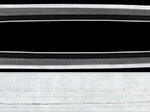 Katana: Hizen Koku Ju Omi Daijo Fujiwara Tadahiro (NBTHK Tokubetsu Hozon Token)
Katana: Hizen Koku Ju Omi Daijo Fujiwara Tadahiro (NBTHK Tokubetsu Hozon Token)
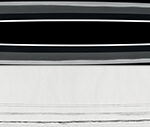 Katana:Hizen Kuni Ju Oumi Daijo Fujiwara Tadahiro with Saidan mei(NBTHK Tokubetsu Hozon Token)
Katana:Hizen Kuni Ju Oumi Daijo Fujiwara Tadahiro with Saidan mei(NBTHK Tokubetsu Hozon Token)
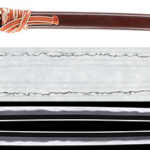 Katana: Hizen Kuni Kawachi Daijo Masahiro (first generation)(61st NBTHK Juyo Paper)
Katana: Hizen Kuni Kawachi Daijo Masahiro (first generation)(61st NBTHK Juyo Paper)
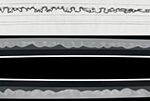 Katana:Echigo no Kami Kanesada(NBTHK Tokubetsu Hozon Token)
Katana:Echigo no Kami Kanesada(NBTHK Tokubetsu Hozon Token)
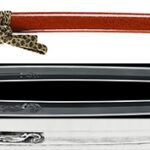 Katana:Hizen Koku Ju Omi Daijo Fujiwara Tadahiro (NBTHK Tokubetsu Hozon Token)
Katana:Hizen Koku Ju Omi Daijo Fujiwara Tadahiro (NBTHK Tokubetsu Hozon Token)






